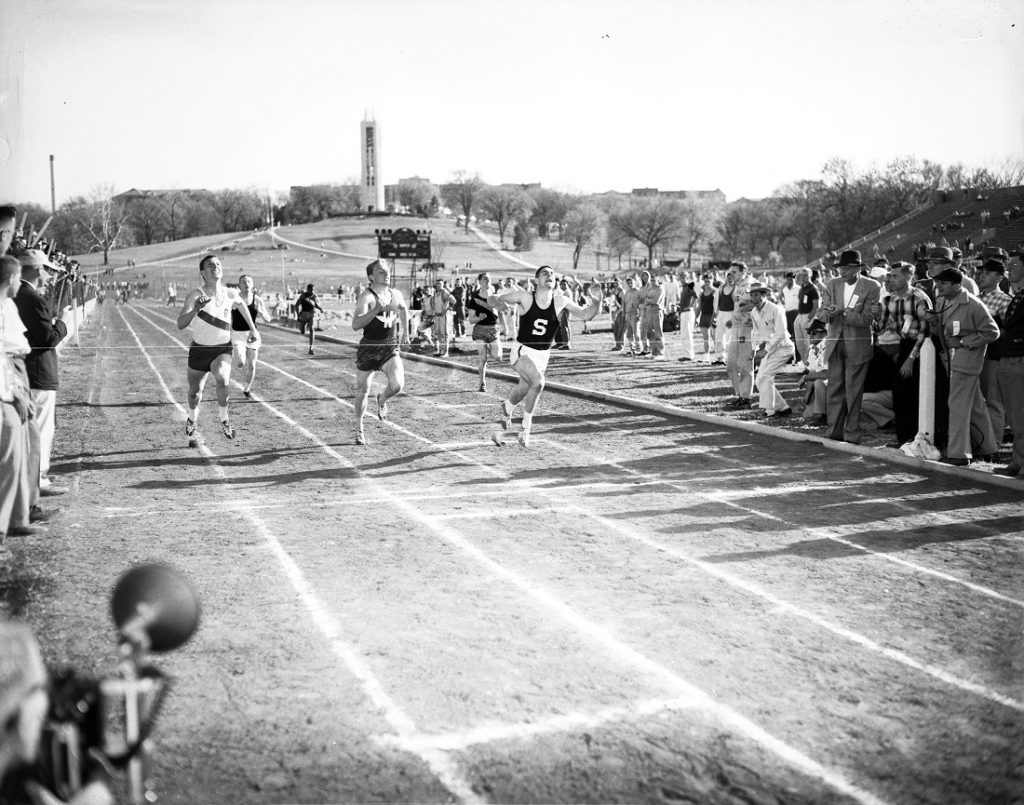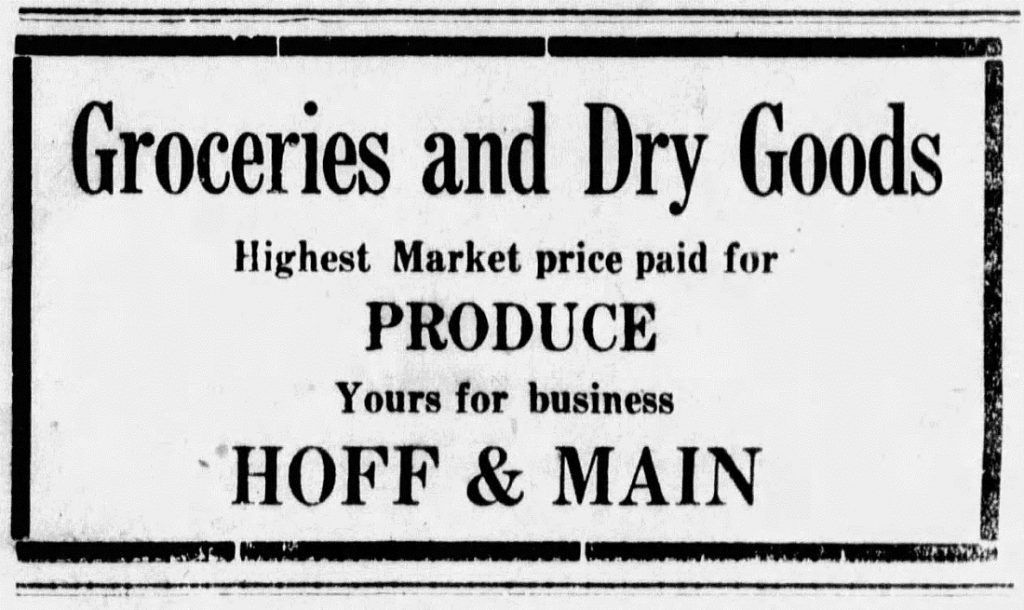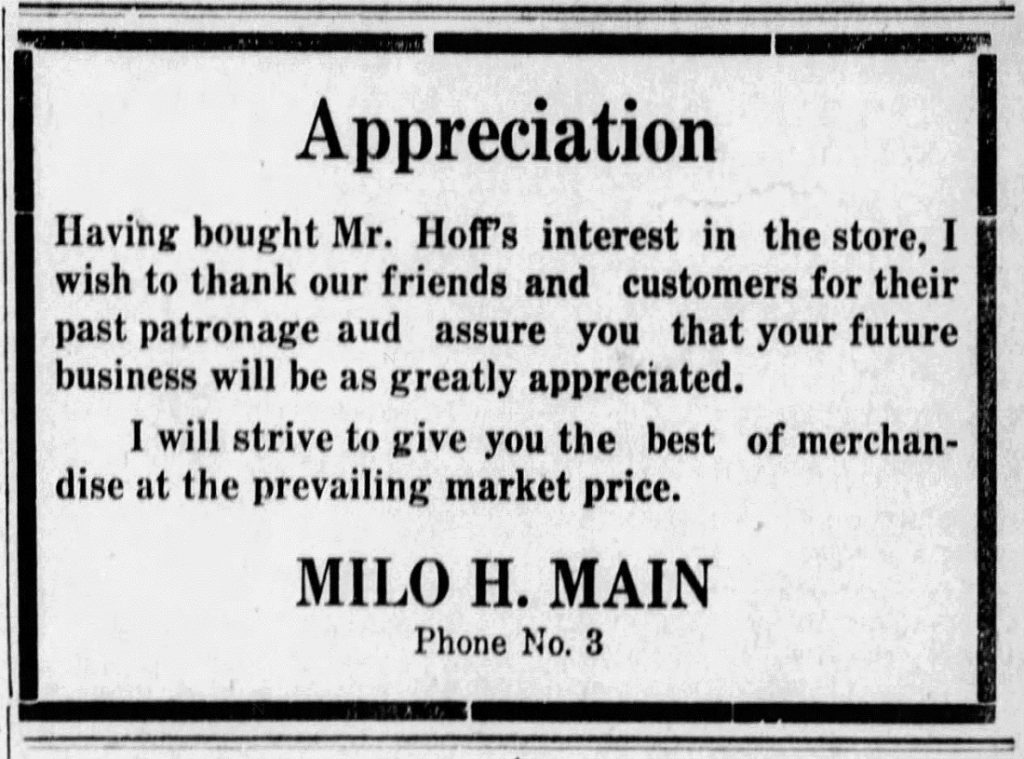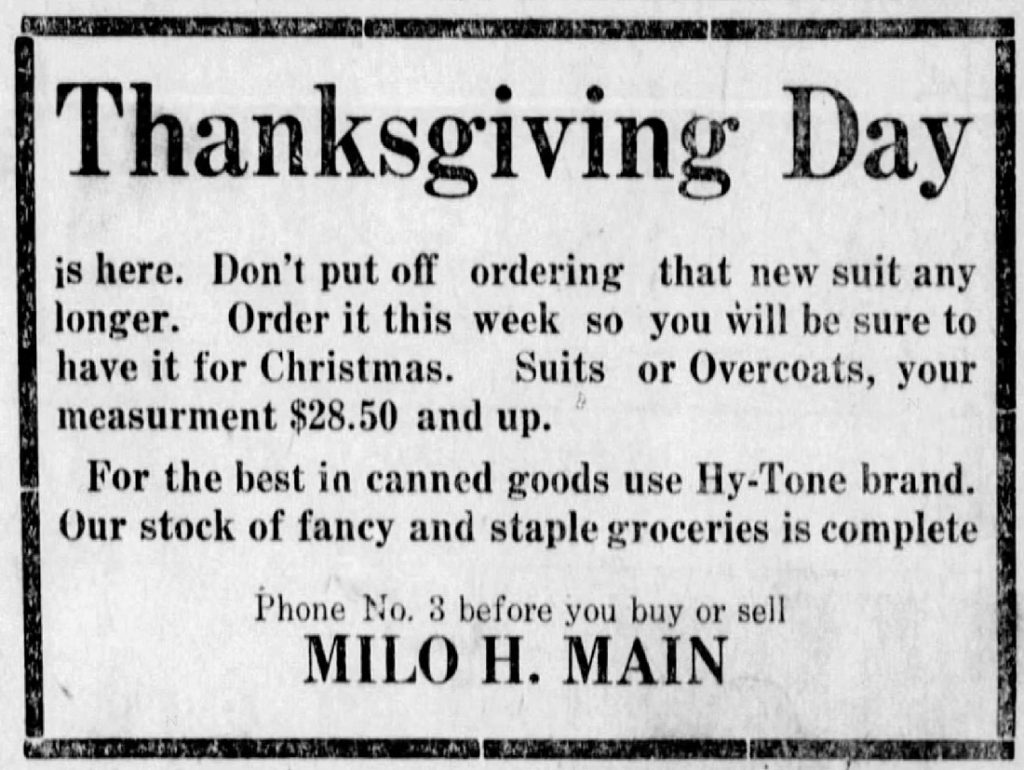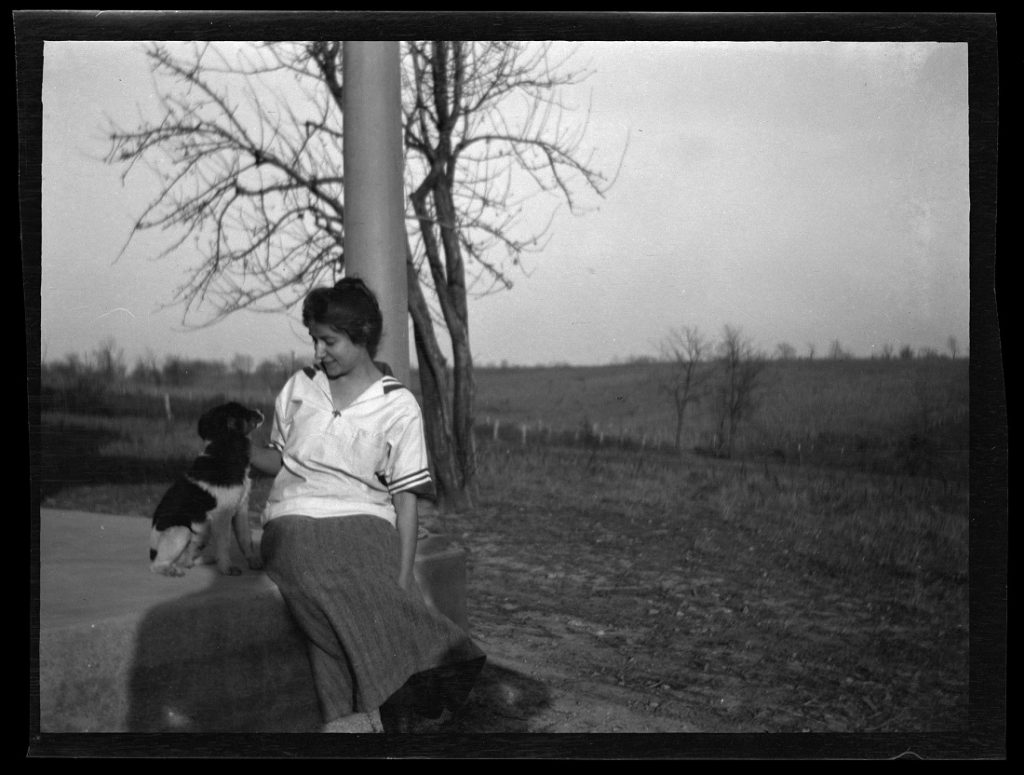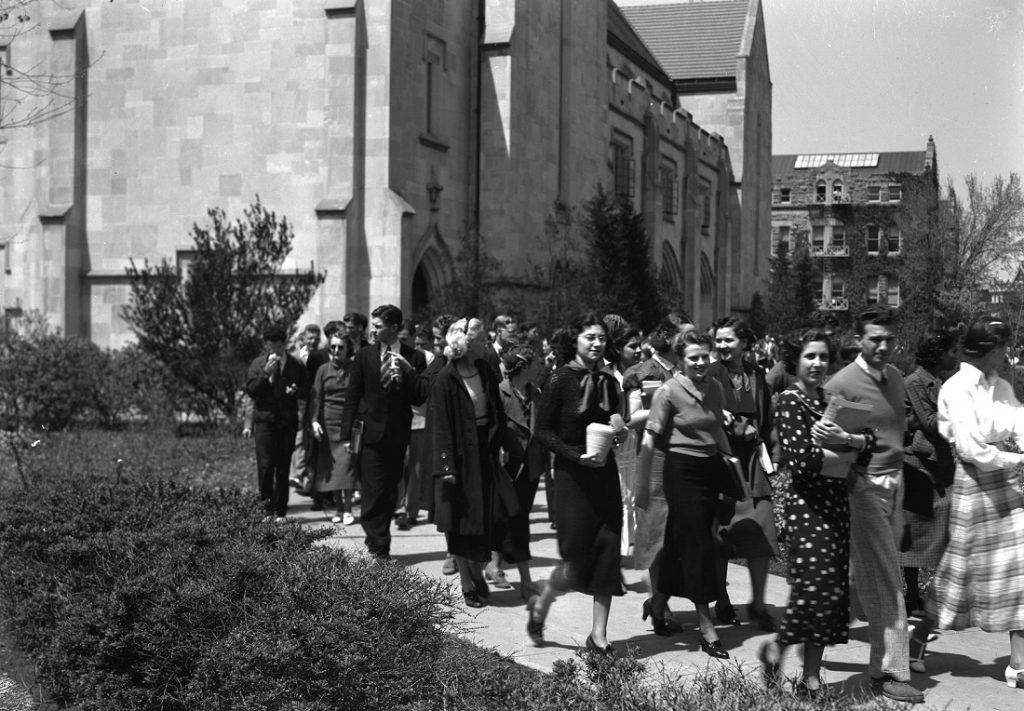On April 12, 1911, the weather in Lawrence had already been unseasonably humid for two days. All through the day, it was obvious that a powerful storm was brewing. Wind speeds had steadily increased, reaching forty miles per hour at noon. By that evening, a full-blown thunderstorm was underway.
Seasoned Kansans knew that weather conditions such as these could foreshadow a coming tornado, and this was no exception. Five minutes before seven o’clock, in a surge of rain, the tornado dropped down. For twenty-five minutes, it passed through the city in a northeastern direction. In its path, it destroyed businesses along Massachusetts Street and homes in West and North Lawrence. Reporting on the event the next day, the Lawrence Daily Journal-World described the massive loss of property, estimated to be $200,000. The paper also estimated that repairs would cost $133,950.00, which would be over $3.5 million in today’s dollars. The extensive damage can be seen in the photographs included in this post, which were taken the day after the tornado.
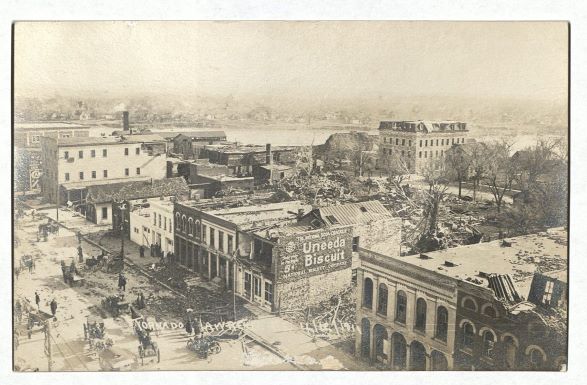
Massachusetts Street looking northeast after the tornado, April 13, 1911. Lawrence
Photograph Collection. Call Number: RH PH 18 M 6:2. Click image to enlarge.
Coverage of the tornado by the Journal-World contained reports of the dead and injured. Miraculously, only two Lawrence residents perished.
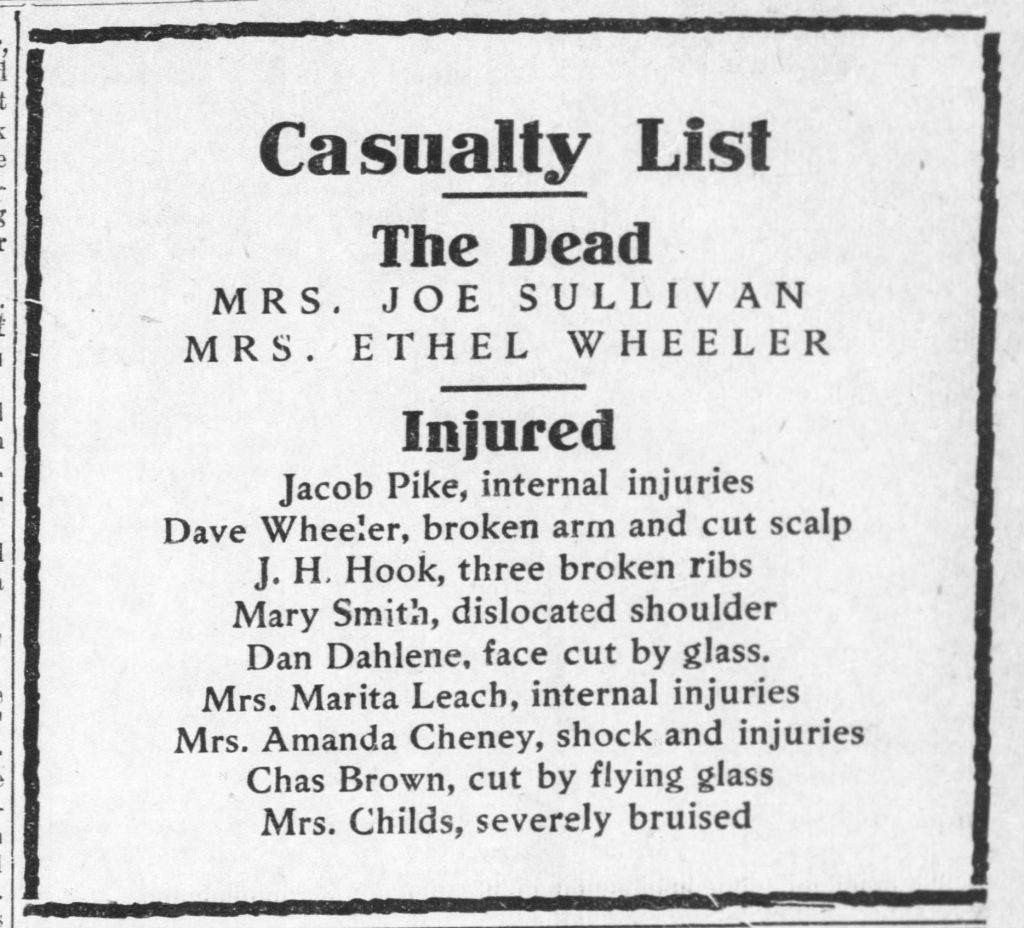
The tornado casualty list from the Lawrence Daily Journal-World,
April 13, 1911. Image via Newspapers.com. Click image to enlarge.
Included in the newspaper’s reports were details about the death of Margaret Sullivan, who was seventy-one years old.
When the full violence of the storm became apparent to the inmates of the Sullivan [home], George, a crippled son called to his mother to take refuge in the cellar. Mrs. Sullivan remembered an open transom, and fearing that the rain which was falling in torrents would stain her carpet, paused to lower the sash. Before she could join her son, the house was swept from its foundation and both inmates buried beneath a pile of wreckage.
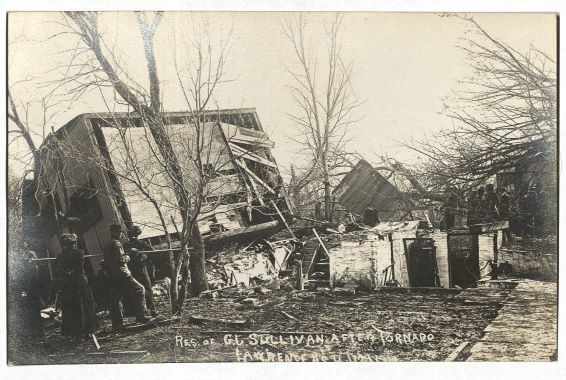
636 Illinois Street, the home of Mrs. Joe Sullivan, after the tornado, April 13, 1911.
Lawrence Photograph Collection. Call Number: RH PH 18 M 6:21. Click image to enlarge.
The Journal-World also provided detailed information about the death of Ethel Wheeler, who worked as a “domestic” on the Doubleday farm southwest of town.
The Doubleday farm was in the very vortex of the tornado. [Mrs. Wheeler] lived with her husband in a small annex to the chicken house not fifty feet from the Doubleday home. Just as the woman left the house to go to this small room in which she and her husband lodged, the Doubleday’s heard a terrific crash as the Sibley barn was blown against the farmer’s house a quarter of a mile away. An instant later, their own home was bombarded with flying wreckage, and looking towards the window they saw two faces pressed close against the glass. The faces were those of Phil Olmstead and Joe Badsky, who had been blown from, they did not know where. They were admitted to the Doubleday home, and with the passage of the tornado a few minutes later, they began searching for two Wheelers.
The little room the latter had occupied was merely a heap of heavy timber. Searching in its vicinity with an electric flash light, Floyd Doubleday heard a faint moan coming from beneath the tangled mass of wreckage. With the aid of the two lads, this was lifted up and Dave Wheeler released. He could only moan pitifully and ask brokenly for his wife. His injuries consisted of a compound fracture of the arm, serious internal hurts, and severe scalp wounds.
Securing lanterns the little searching part began looking for Mrs. Wheeler, the woman who had rushed into the very arms of the storm. In the center of a field a long distance from the house, Olmstead suddenly stepped on something yielding. Leaping hastily to one side he stooped over the cold corpse of the negro woman…
[Dave and Ethel Wheeler] were married last October and came to Lawrence only three weeks ago.
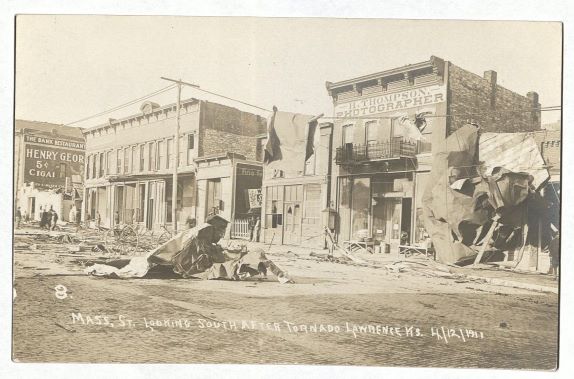
Massachusetts Street looking south after the tornado, April 13, 1911. The Thompson
photography studio was at 615 Massachusetts, where Quinton’s Bar and Deli is located now.
Lawrence Photograph Collection. Call Number: RH PH 18 M 6:3. Click image to enlarge.
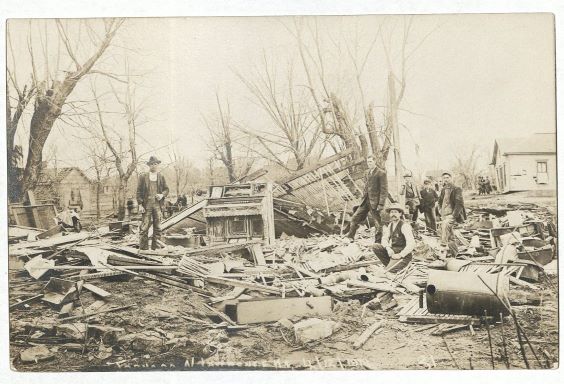
The ruins of an unidentified Lawrence home after the tornado, April 13, 1911.
Lawrence Photograph Collection. Call Number: RH PH 18 M 6:19. Click image to enlarge.
Kathy Lafferty
Public Services

